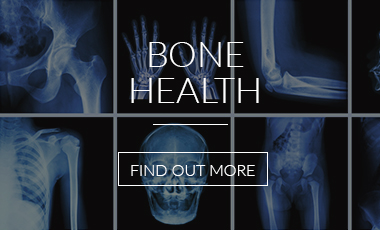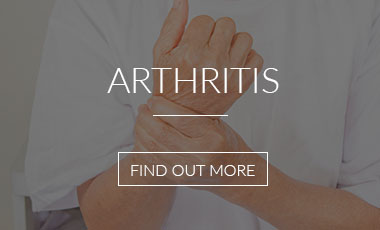Covering exercise and injuries in younger years; ageing well as a product of health, lifestyle and nutrition and menopausal health – treating musculoskeletal symptoms, exercise and health around the menopause
Children + Adolescents
Musculoskeletal complaints in children are usually related to activity. Different injury patterns occur at different ages, probably reflecting relative strengths of adjacent structures at the particular skeletal age.
The immature musculoskeletal system differs significantly from that of the mature individual. Open growth plates are vulnerable to different types of injury, the nature of which varies with age, growth rate and in the presence of a disease process. The characteristics of periosteum and articular cartilage are also different from those of adults.
Additional factors also can play significant roles. Flexibility is usually greater in the child, and there is a greater incidence of hypermobility, which is associated with a higher risk of injury and a longer healing time. On the other hand, growth spurts can lead to muscle-tendon imbalances across joints leading to local injury or to non-specific pain (previously termed ‘growing pains’). Growth spurts also result in reduced flexibility, with lengthening of the musculotendinous unit lagging behind elongation of bone, with resulting stresses applied in particular to the musculotendinous attachments. Biomechanical problems are also common in young people and can increase the stresses upon these tissues and commonly contribute to shin and/or anterior knee pain. Growth spurts and weight gain can alterations in co-ordination and centre of gravity, all of which make the child more susceptible to injury.
Lack of supervision or inadequate matching in contact sports, when matching is performed by age rather than height, weight, development and maturity are further contributing factors to injury. Psychological factors, motivation and parental/peer pressure may be positive or negative influences.
Injuries in children and adolescents can affect the growth plate and these injuries require serious attention.
Injuries can be acute or related to overuse. Where acute injuries occur in the prepubescent child, ligamentous injuries are more likely, as the bone is usually stronger than soft tissues. At the time of the adolescent growth spurt, however, growth plate injuries may occur, as the ligaments may be stronger during this period. At all ages, however, the possibility of a fracture must be considered; and note that x-rays can be inconclusive in this group.
Overuse injuries in relation to repetitive microtrauma are increasingly recognised, often in relation to heavy training in sports. Injuries include tendinitis, bursitis, physeal and osteochondral injuries. Apophyseal injuries (apophysitides) include small avulsions at the weaker bone –cartilage junction due to repetitive traction stresses, with subsequent repair. These include Osgood Schlatters disease at the knee, Severs disease at the heel and iliac crest apophysitis disease at the pelvis. Patients differ in how they respond to these complaints and so no one single approach suits all.
Management of injuries in Children & Adolescents
Although the principles of management are the same, the treatment of soft tissue complaints in children differs from that in adults in several respects. The use of drugs is generally discouraged, although may be necessary in severe cases or where rehabilitation is being inhibited; the use of injections is· strongly discouraged; the use of modalities such as ultrasound should be avoided near open growth plates, but the use of electromuscular stimulation is allowed.
Rehabilitation, as with adults, forms the core of the management regime, but must be modified to suit the child. Those children going through growth spurts also need much explanation and reassurance that, for example, the sudden changes in co-ordination that has occurred is temporary. If strength training is considered, the child must adhere to light weights, and move through a limited range of motion. Those children with hypermobility need much counseling, reassurance and supervised rehabilitation.
Some of Professor Speed’s publications on Children + Adolescents:
Papers:
- Bones before 50: children and adolescents
- Vitamin D
- Speed CA, Fordham JN, Cunningham JL.Simultaneous bilateral tibial stress fractures in a 15-year-old milkman–a case report. Br J Rheumatol. 1996 Sep;35(9):905-7.
- Speed CA. Sports Injuries. In: ABC of Rheumatology. Adebajo A (ed). BMJ Books. 2003. 2007 (4th edition).
Chapters:
- SPECIAL GROUPS: IN: The Oxford Textbook of Soft Tissue Rheumatology. BL Hazleman, GP Riley, CA Speed (eds). Oxford University Press. Oxford, 2004.
Ageing
Our population is ageing, and many want to stay fit and active as they age, participating in sport and other physical activity throughout their lifetime.
“Ageing well” is more likely with healthy lifestyles and behaviours: good nutrition, sleep and regular physical activity. Anything that limits this should be dealt with proactively: any illness or painful musculoskeletal condition that impairs function should be addressed. Such complaints therefore warrant prompt and thorough attention. It is important for the physician to beware of ageism, and to give careful consideration to any injury, avoiding simply attributing musculoskeletal symptoms to ‘wear and tear’.
With the ever-increasing age of our population, special consideration of soft tissue complaints in older people is warranted. Older people are physiologically, structurally and psychosocially different from younger adults in their predisposition and response to injury. Along with a greater predisposition to general medical problems and a range of cardiovascular, respiratory, renal, metabolic and neuropsychiatric changes, a number of musculoskeletal changes occur. Many of these are at least in part related to a decline in activity levels and therefore perhaps the greatest threat to many folk as they age is a sedentary lifestyle.
Ageing is associated with a decline in strength, related to a decline in muscle mass, a decrease in size and number of muscle fibres, changes in muscle contraction and slowing of nerve fibres that activate muscle.
Soft tissues become stiffer, weaker and more prone to injury. Joints also show changes to cartilage and other related structures that result in arthritis and cause pain and functional limitation.
Healing takes longer as we age and recovery programmes should be customised to the patient.
Physical programmes to prevent injuries are ones that include daily warm up, stretching, balance work, and aerobic activities. 30-60 minutes of aerobic activity -· the equivalent of a brisk walk – is advised. Strengthening of major muscle groups should take place three times per week.
Fine-tuning nutrition is important in active ageing individuals and supplements may be helpful in some.
Some of Professor Speed’s publications on Ageing:
Papers:
- BSpeed CA. Exercise Prescription. Practitioner 2008.
Chapters:
- “Special Groups” in The Oxford Textbook of Soft Tissue Rheumatology. BL Hazleman, GP Riley, CA Speed (eds). Oxford University Press. Oxford, 2004.
Theses:
- BSpeed CA. Self Paced Stepping and Stair Climbing in Exercise Testing. B Med Sci Thesis. Nottingham University, 1987.
- Speed CA. Strength, muscle fatigue and· strength training in rheumatoid arthritis. PhD Thesis, University of Durham, 1998.
Menopausal Musculoskeletal Health and Therapeutic Excercise
Nearing and reaching the menopause can lead to joint pain and swelling, easy and stubborn soft tissue injuries, can aggravate arthritis and can cause marked fatigue. A careful diagnosis of musculoskeletal issues when they arise is important, and leads to best customised treatment.
Exercise is an important part of management, enhancing wellbeing, bone and muscle strength and reducing many health risks.
Some publications related to Ageing Menopausal Musculoskeletal Health and Therapeutic Exercise:
- Speed CA. Exercise and menstrual function. BMJ. 2007 Jan 27;334(7586):164-5.
- Speed C. Exercise-related menstrual dysfunction: implications for menopausal health. Menopause Int. 2007 Jun;13(2):88-89.
- Fordham J, Speed C. Postmenopausal hormone replacement therapy. BMJ. 1993 Jan 23;306(6872):270.
- Special groups. IN: The Oxford Textbook of Soft Tissue Rheumatology. BL Hazleman, GP Riley, CA Speed (eds). Oxford University Press. Oxford, 2004.






